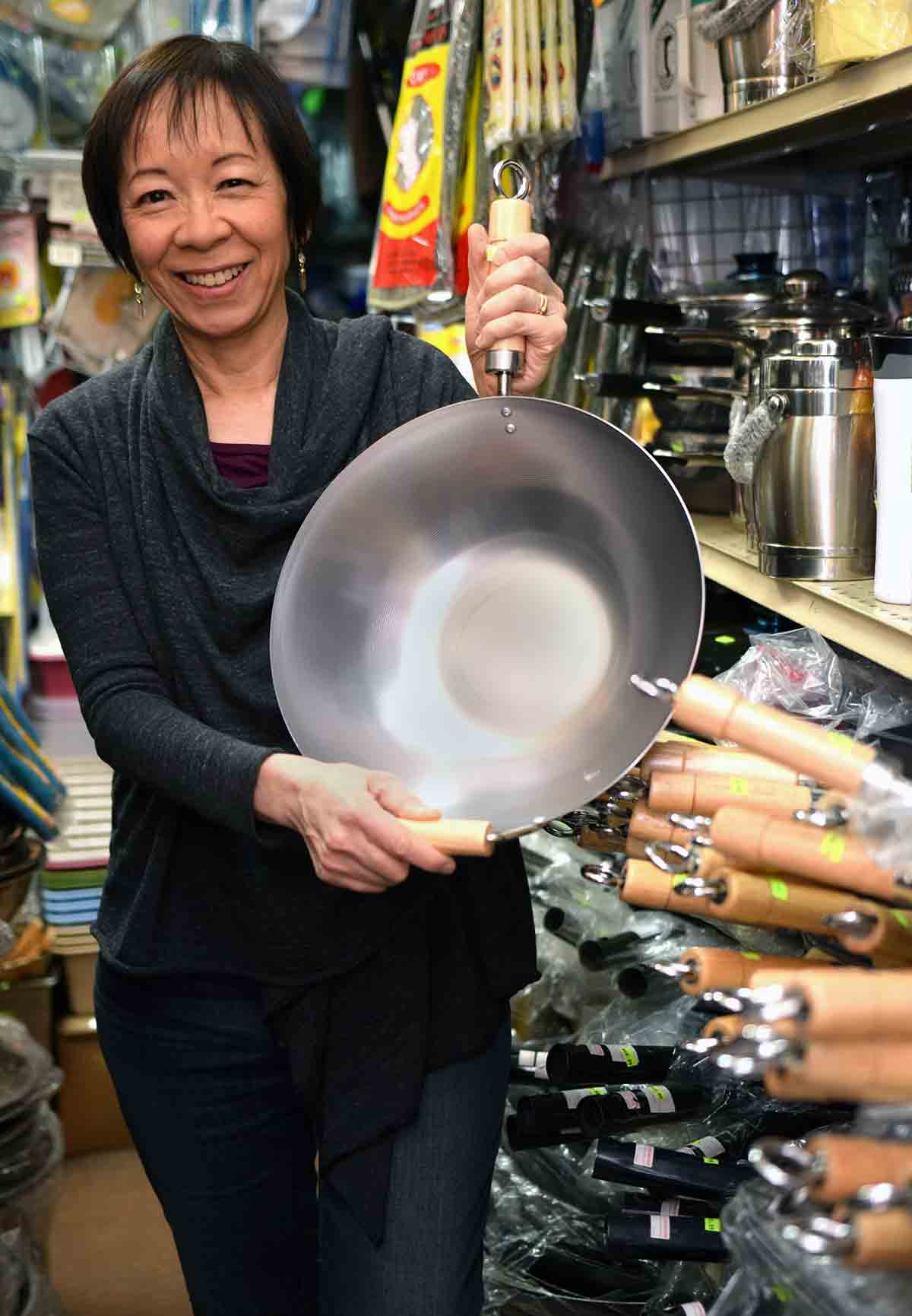
SUBSCRIBE ON Apple | Spotify | Sticher | Amazon | Google | iHeart | TuneIn
☞ If you like what you hear and want to donate, even $1 will help! Thank you.
Chat with us

Have a cooking question, query, or quagmire you’d like Renee and David to answer? Click that big-mouth button to the right to leave us a recorded message. Just enter your name and email address, press record, and talk away. We’ll definitely get back to you. And who knows? Maybe you’ll be featured on the show!
Transcript
Renee Schettler: David?
David Leite: Mm-hmm.
Renee: Do you do woks?
David: Do I do woks?
Renee: Mm-hmm.
David: Do I have a wok, you mean?
Renee: Yes to clarify, do you own the piece of kitchen equipment known as a wok?
David: No, I don’t. In my defense, I do have something I refer to as a wok with a wok on top.
Renee: Oh, that Portuguese thingy.
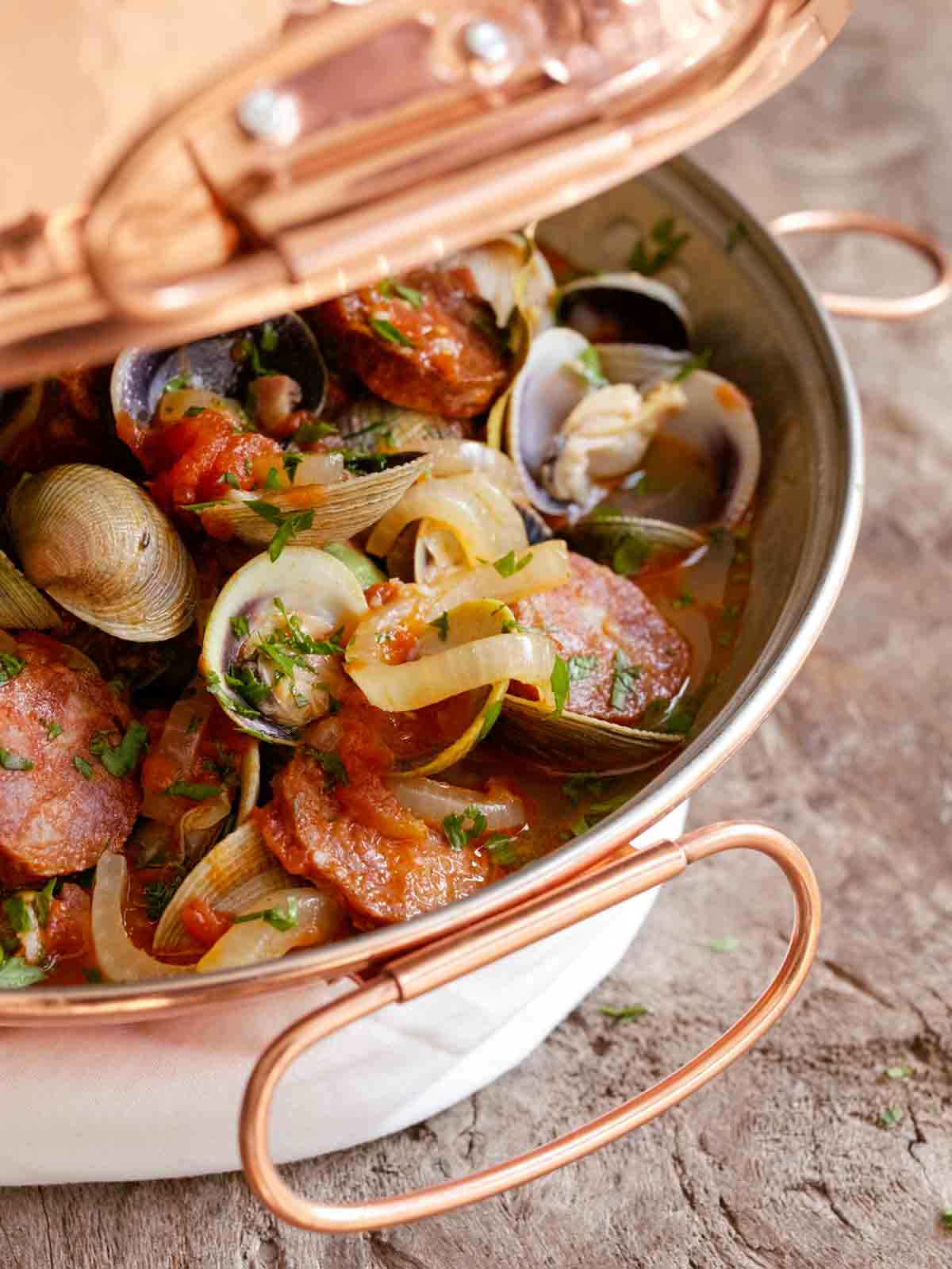
David: Yeah, the cataplana, and the name came from the time that I was on The Today Show. It was Al Roker and me, we were talking about cataplanas, and he said, “So what is this?”
Renee: I remember that. I was there.
David: Of course you were, that’s right. And he said, “What is this?”, and I said, “it’s a cataplana”. I said “Think of it is a wok with a wok on top”. And he’s like “A wok with a wok on top. I like that. A wok with a wok on top”. So ever since, whenever I cook in the cataplana, The One will say, “Hey, get the wok with a wok on top.” But no, do I have a wok, a true wok? No, I’m wok-less.
Renee: That’s sad. Absolutely. Back in the day, I used to have a really heavy cast iron wok, but that became a little bit cumbersome to use. And then for a while, we had a stainless steel one that was a gift that was ginormous, but great. It was really thick though. You couldn’t really control the temperature as nicely as I liked, but I made everything in it. And now I’m in between woks. I’ve got a carbon steel wok that I have yet to season, but I can’t wait to use it.
David: So what is it about a wok that you love?
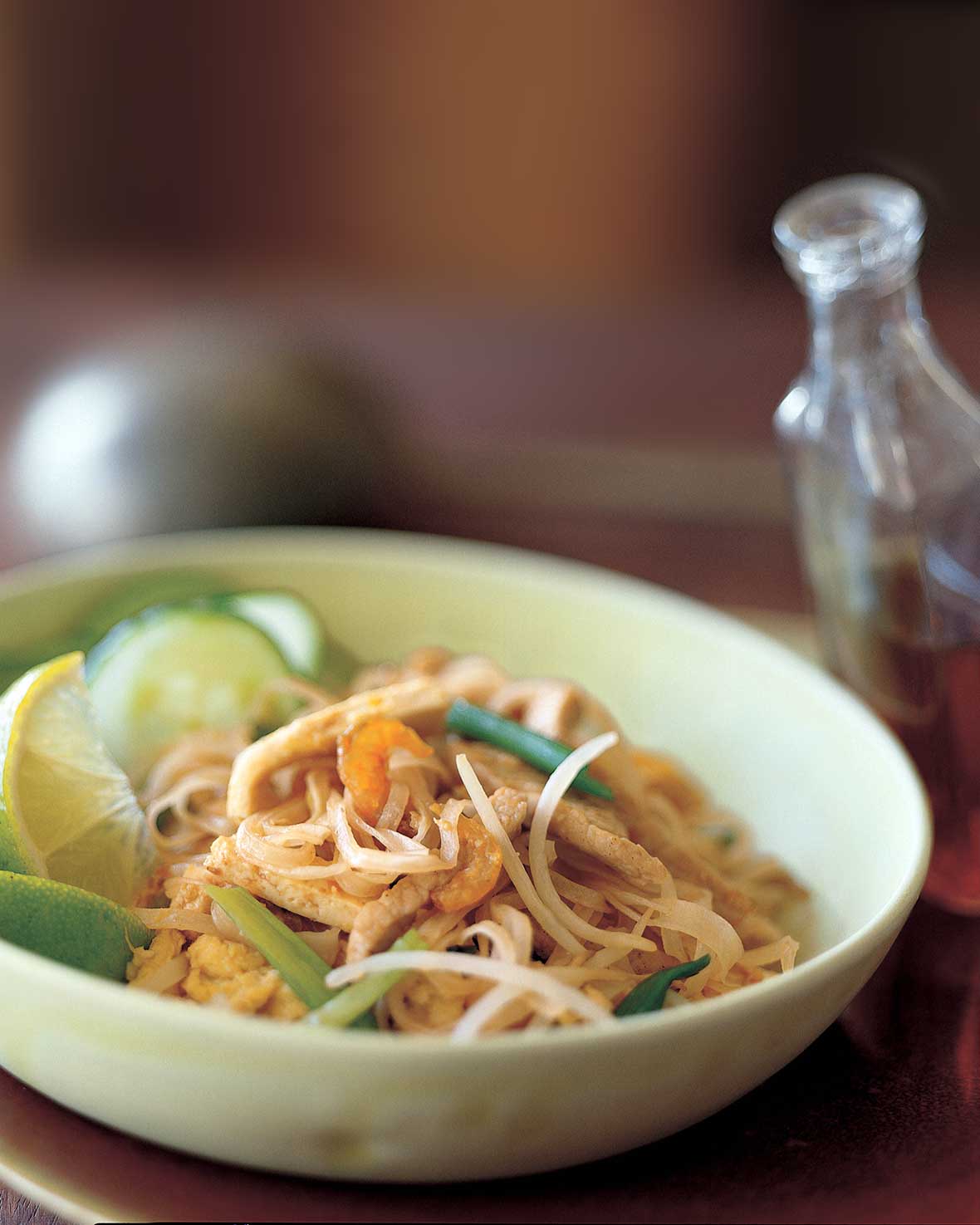
Renee: I love what I can make in it. I use it for almost everything. I mean, my favorite pad Thai. I love the surface area of the wok because I like the crisp edges on the noodles, whether I’m doing pad Thai or more commonly, a Vietnamese style noodle dish, or even fried rice. And that lets me spread the ingredients out and they get that really amazing wok hei.
David: What?
Renee: Wok hei. I believe is how they say it, but I took French. So maybe it’s more like wok hei.
David: Wok hei. Okay. What else have you made in it?
Renee: I’ve made popcorn in it. I’ve made deep-fried chicken in it for Thanksgiving. Momofuku fried chicken.
David: First of all, you made fried chicken for Thanksgiving? In a wok?
Renee: In a wok.
David: Oh, I’m sorry. This is like my ears. I can’t hear that. I’m a traditionalist. I want Thanksgiving to be traditional. I think I want what goes in my wok to be traditional. So that’s where I draw the line.
Renee: You are missing out! I’m Renee Schettler, editor in chief of Leite’s Culinaria.
David: And I’m David Leite, its founder. And this is Talking With My Mouth Full, a podcast devoted to all things food, the people who make it, and the stories that make the people. Now, I could come up with all kinds of really bad puns to introduce our guest today, such as, “We’re going to wok and roll with Grace Young,” or “We’re going to wok it out of the park with Grace Young,” but–
Renee: [sighs].
David: I know! That’s what I said. I could do it, but it’s hardly a dignified way to introduce a double James Beard award-winning author and filmmaker whose book The Breath of a Wok was inducted into the 2019 IACP Cookbook Hall of Fame. And whose family’s wok is going into this Smithsonian Institution. So I will just say, “Welcome Grace.”
Renee: Glad you’re here, Grace.
Grace Young: My pleasure.
The Wok Therapist
Renee: Grace, so much of what you’ve done over the last several decades has been all about preserving and sharing authentic Chinese culinary traditions. Can you tell us a little about your Wok Therapist video just won a James Beard award?
Grace: Wok Therapist is my secret life that nobody knows about. And I’ve been doing this for over 20 years. And in the beginning I got messages by email, through my website, and now in recent years, the messages come through Facebook, Instagram, Twitter. There are so many people that are using a wok for the first time and are completely intimidated and they need lots of handholding. And the moment they’ve seasoned their new wok, they’re sure they’ve done it wrong and they are really sweating it. And could I please send you a photograph of my wok or some of them just boldly include it. What did I do wrong? Should I do it over again? Should I start over? Should I throw this away? Should I buy a new wok?

Grace: And then for those who already have a wok that they’ve seasoned and they’ve been using it for a while, they are completely judgemental about how their wok looks. They don’t like the fact that it’s really black on the bottom, but the sides haven’t gotten black yet, or there are scratches on the wok and what am I doing wrong? And then when I write back to them and say, but is the wok cooking well? Like, is food sticking? Are you making a delicious . . .? Oh yeah, no. In fact, they say I made the most delicious stir fry, but I don’t like the way my wok looks.
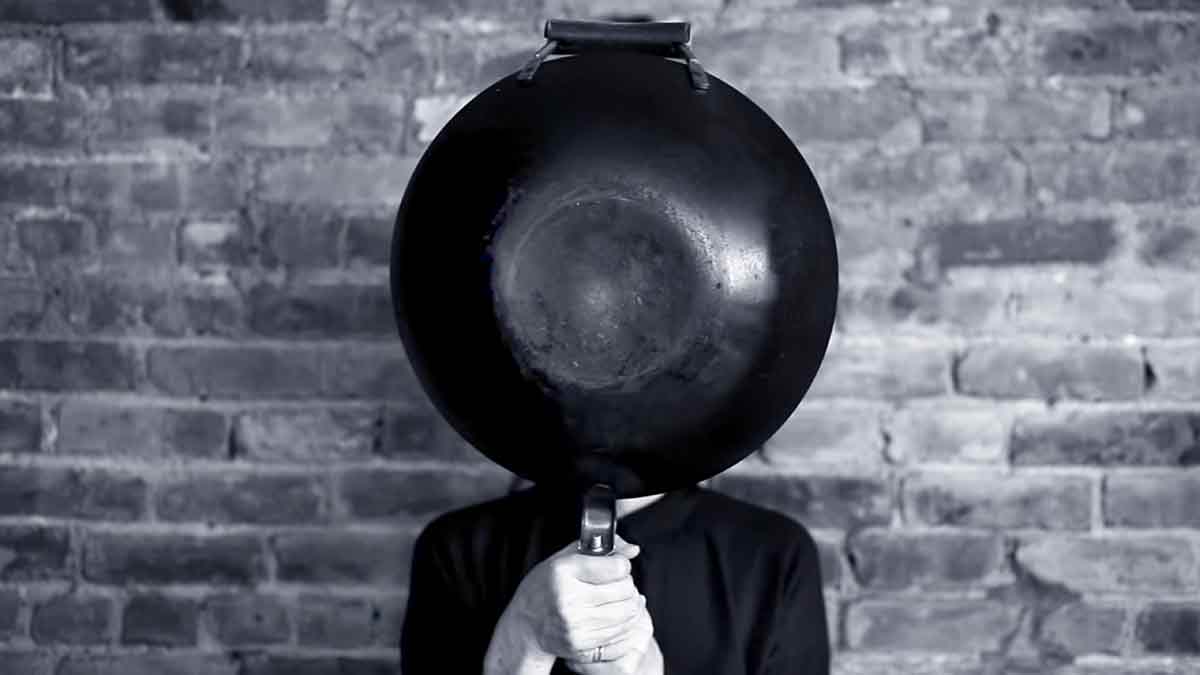
Renee: Selfie culture.
David: Wow.
Grace: So in the beginning, I wrote back and the explanation for everything and “wok-ed” them through what was happening. But after a while, I realized that I needed to give them some therapy and I needed to tell them not to be so judgmental. I needed to tell them to sort of like go with the flow that stuff happens sometimes when you’re adding an acidic ingredient like vinegar, or you’re using tomatoes, that the patina comes off of your wok, but you keep on cooking with your wok and another two or three dishes that patina is restored. And my husband oftentimes likes to go to bed early and I will be at my office desk answering emails, and he’ll look at me and he’ll say, “What are you doing?” And I’ll say “Hey, I’m with my patients. I’ve got to help them.” You know, they’re completely anxious and paranoid about what’s happening with their wok and when he wakes up in the morning I’m at my computer, same thing.
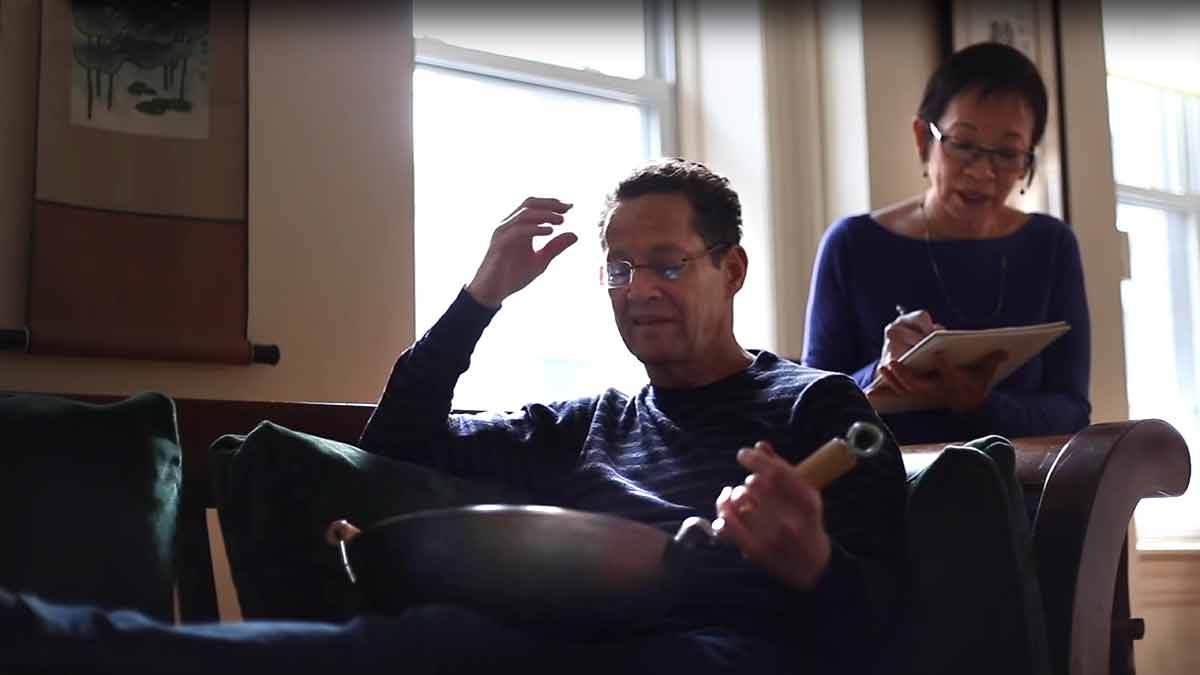
Grace: And so for a while, I’ve been thinking I should really do a video about this. And I didn’t know if it was funny, which is what I think it is, or whether or not it was a really bad idea. And so I started working on this video and I work with this amazing filmmaker, Harrison Jeffs, and we started working on this and I wrote the script. And after the first day of shooting, I was just so pumped and excited. And Harrison flew to LA to start a new job. And I didn’t hear from him for four months. And then when I finally heard from him and I didn’t want to bother him, because his new job, new city, new apartment, new roommate, then he said to me, “It’s just not working”. And he said that there was not enough visuals to go with my whole narration, and it just wasn’t coming together.
Grace: So he was about to come back to New York for the holidays. And I asked him if he would give me another half day of shooting. I wasn’t very confident from the very beginning, as I said to you, whether or not this was a great idea or that I just thought it was funny. So he came and I had to shave off one minute of narration. I thought every word was just perfect, I can’t delete this. I can’t delete that. And it was really horrifying to have to cut one minute and then we shot more footage. And then he went back to LA, and we just went back and forth. He kept on sending me rough cuts and it finally came together. So it was a really interesting lesson about the creative process and how you have to just kind of keep at it sometimes.
Grace: And then in the end, when he got that music, which is so playful and goofy, it was just perfect. And every time I watch it, I smile. Everybody who sees it really identifies with it. And even if they’re not cooking with a wok, people understand the humor and they all understand that we’re so hard on ourselves and so self-critical, and that we want perfection.
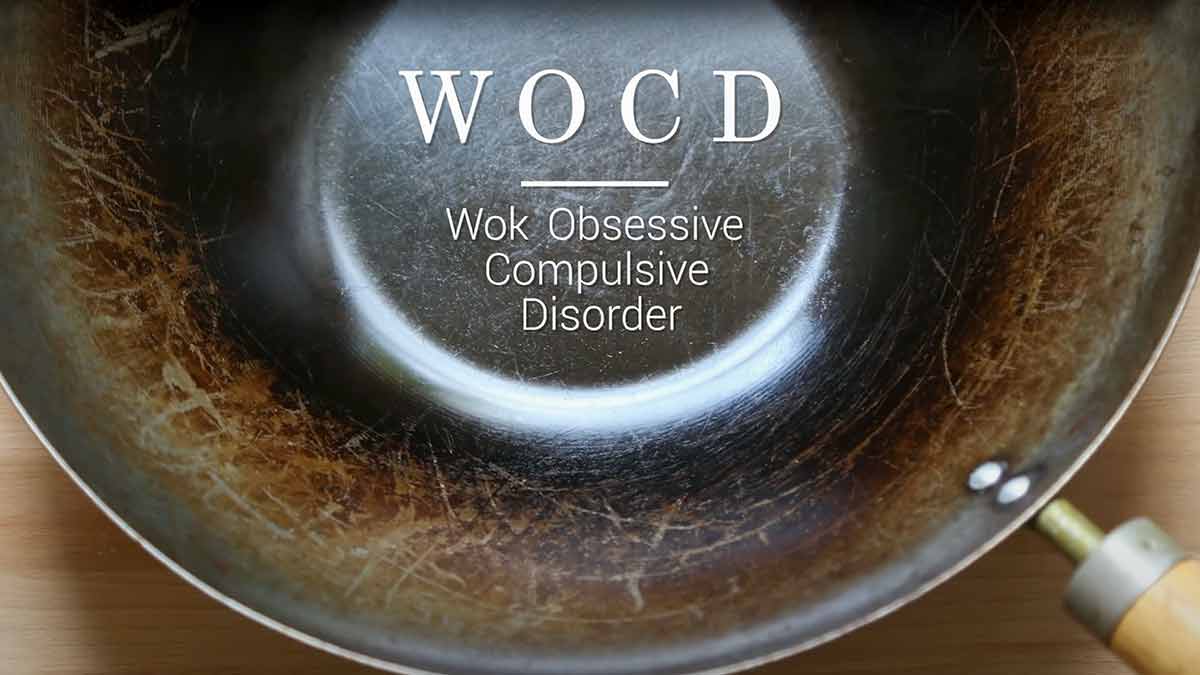
Grace: And the whole thing about wok cooking is cooking with the wok is a process. In American life, or in Western life, we’re so used to wanting everything to be brand new. When I walk into the Apple store with my phone, the guys look at it and go, “Oh, it’s an eight. Oh, I heard about this.”
David: I’m so sorry.
Grace: They’re like, “Oh, I sort of remember hearing about this one.”
Renee: Like it was from before they were born.
Grace: Yeah. And so with the car, with the computer, with your phone, you want everything to be the newest, but with a wok, the older, the better. The Chinese say that the older the wok, the more it’s been cooked with the better the food. Paula Wolfert used to always describe clay pot cooking–the older clay pot actually holds food memories, and that’s why the food is so delicious.
How to season a wok
David: What’s so great about the Wok Therapist is that there is humor. It is entertaining, but it’s educational at the same time. So let’s pull apart some of the elements that you talk about in the Wok Therapist. Let’s start with seasoning. You mentioned that. What is the proper way to season a wok?
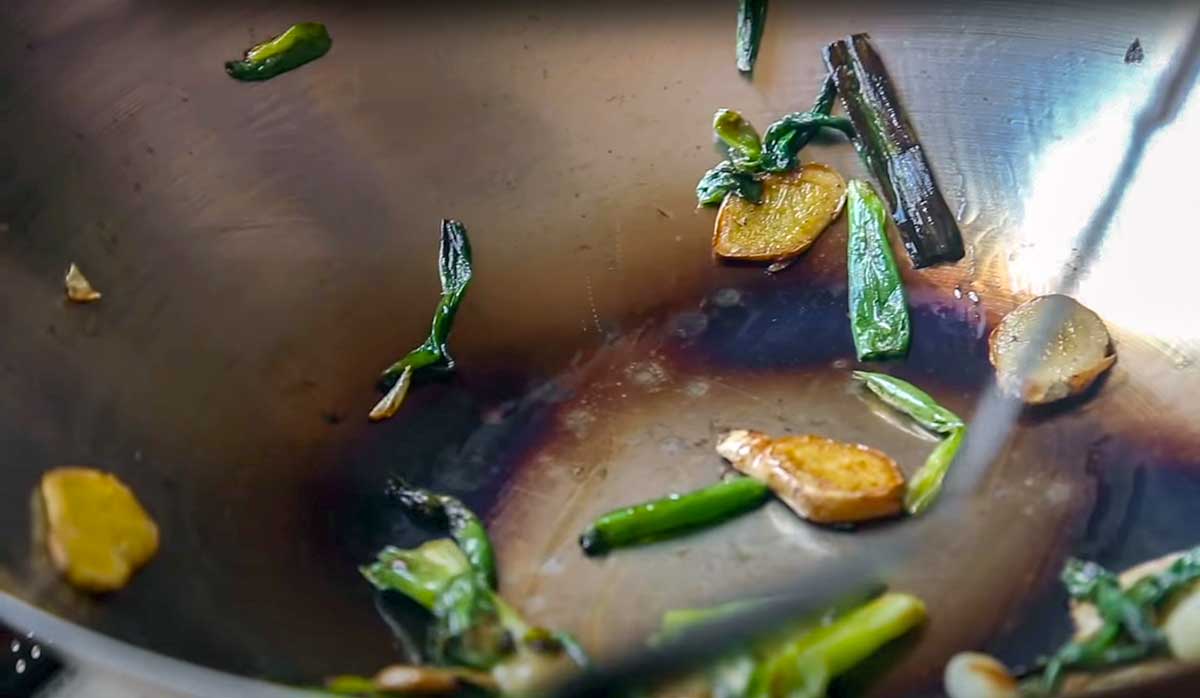
Grace: So there are many different ways to season a wok, but my favorite way is to stir fry scallions and ginger. First you wash the wok with soap and a stainless steel scrubber several times, inside and outside, because there’s always a factory coating on the wok and it does not look like you’re taking anything off. So when I tell people really use your elbow grease to scrub off everything in the inside and outside, people will say, “I didn’t see anything come off, but there’s always a coating because if there isn’t a coating, the pan would start to rust before you get it. And then after you scrubbed it with soap and water and rinsed it with hot water, poured out all the water, then you put the wok on the stove and heat it on low heat for about one minute until all the water has completely disappeared.
Grace: And then you can set it on high heat, swirl in a tablespoon or two tablespoons of a high-smoking point oil such as peanut, grapeseed, avocado. You could use sunflower. Canola oil is also great. And then you add one bunch of scallions that have been cut into two-inch pieces and a half a cup of sliced ginger. That’s it. Then you reduce the temperature to medium. Normally when you stir fry, it’s always on high heat, but here you reduce the temperature to medium. And then you just stir fry the mixture.
Grace: And as the scallions and ginger begin to soften, then you take your spatula and push the mixture all the way up to the edges of the wok and sort of shmear as we say, in New York, smear the mixture all the way up to the top edge. And what you’re doing is the heat is opening up the pores of the wok. And this scallion, ginger oil mixture is coating the pores and literally sealing them from rust. And the pores are opened up and absorbing the oil and a brand new wok is always really thirsty for oil. So that’s what creates the initial seasoning, which develops into a beautiful patina.
Renee: And this is so helpful because I’m actually in between woks at the moment. I previously had a stainless steel wok, but I’ve got just…I know, I know the horror, right? It was a gift. It was a gift. But now I’ve got this beautiful, just $20 flat bottom, carbon steel wok. And I’ve been putting off the seasoning until I could hear this from you.
Grace: You’re not the first.
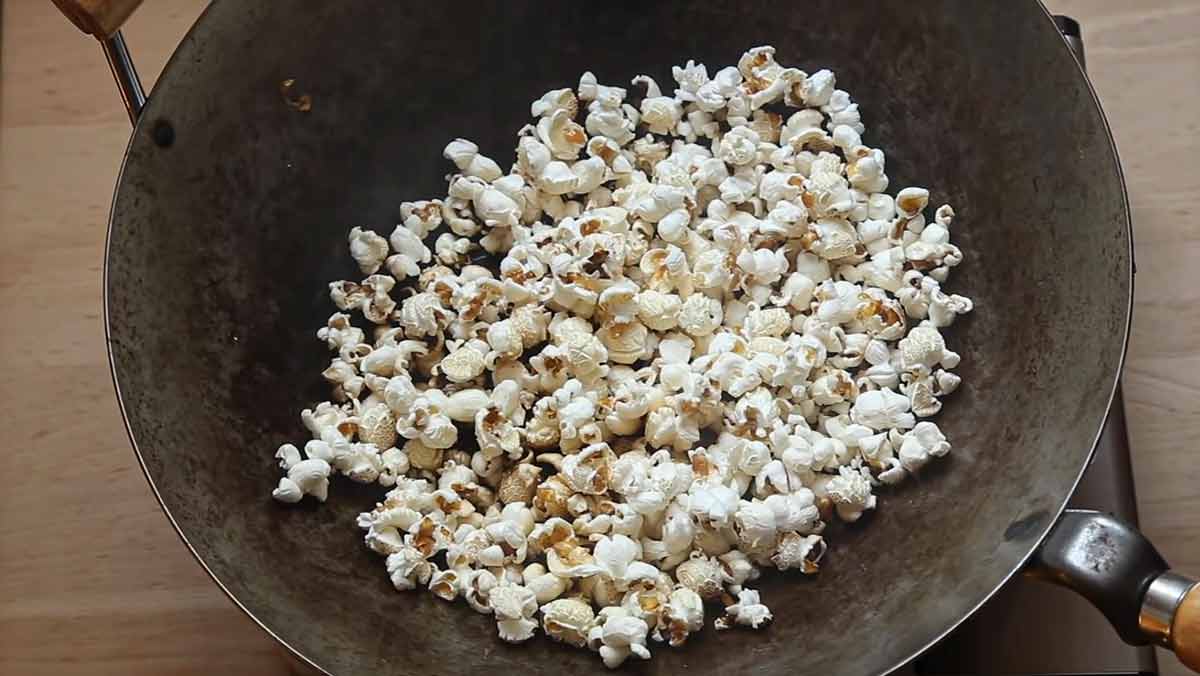
David: What’s so wonderful is when you read the instructions of how to season a cast-iron skillet, put the oil in it, wipe it, you put it in the oven, high heat. And that’s it. What you said was so poetic that the wok is thirsty, that the oils are sealing the wok. It’s just, it’s such a different way of thinking about it, as opposed to that sort of rat-tat-tat way we do it for cast iron. I’ve never heard anyone call a cast-iron skillet thirsty, but it’s so beautiful, the way that you said that. So let’s talk about some other things. What are some of the other questions, the big questions that you’ve gotten from people when they write in that you put into the Wok Therapist?
What is wok envy?
Grace: The number one question that comes up is “Why doesn’t my wok look like yours?” So this is a very common condition of my wok patients is Wok Envy. And so many people have seen photographs of my wok either through my cookbooks, articles on my website, a posting I’ve done on Facebook or Instagram.
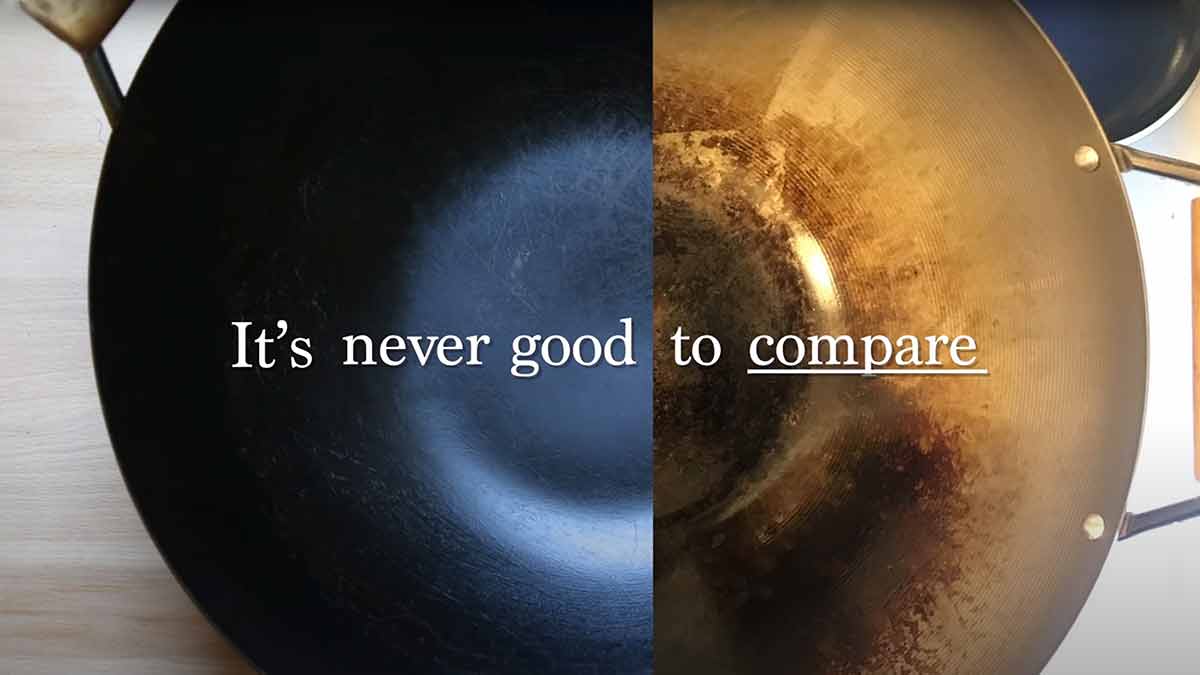
Renee: In the Smithsonian National Museum of American History.
Grace: Yes. So they want their brand new wok to look like a wok that’s 20 years old.
David: And it ain’t going to happen overnight.
How to short cut seasoning your wok
Grace: Yeah. This is a reflection of our impatient culture and society, that we want things to happen overnight. So you just mentioned how to season a cast-iron skillet by the traditional way is to coat it with oil and put it into the oven. There is a way to cheat your wok, and that is to coat it with flaxseed oil and bake it in the oven. And so this news has come out, I’ve done a little video about it for Weight Watchers. And so people are always very eager to learn how to do the flaxseed-oil-seasoning method. And I have to say, I prefer the 14-inch flat bottom wok that has the long wood handle and the short wood helper handle. And so you have to know to wrap the handles with sopping wet, washcloths, old wash costs that you don’t care get messed up.
Grace: And then I wrap them with foil, and then you lightly coat it with flax seed and you have to be very light. People put a heavy coat. If you see the bead of the oil on the surface, you’ve put too much on. So it has to be a really, really thin coat. And then you can put it into the oven. I think it’s at 425° for 20 minutes. I rarely do this method. So you have to check me on the time. You could do it for 20 minutes and then take it out. Be very careful and then do another coating. And you could do two or three coatings of this. And then after that, do a stir fry of scallions and ginger, and the wok is visibly much darker than if you just did the stir fry of scallions and ginger. But sometimes people are a little heavy handed with the flaxseed oil, even though I warn them, and the moment they start stir-frying, the coating literally comes off.
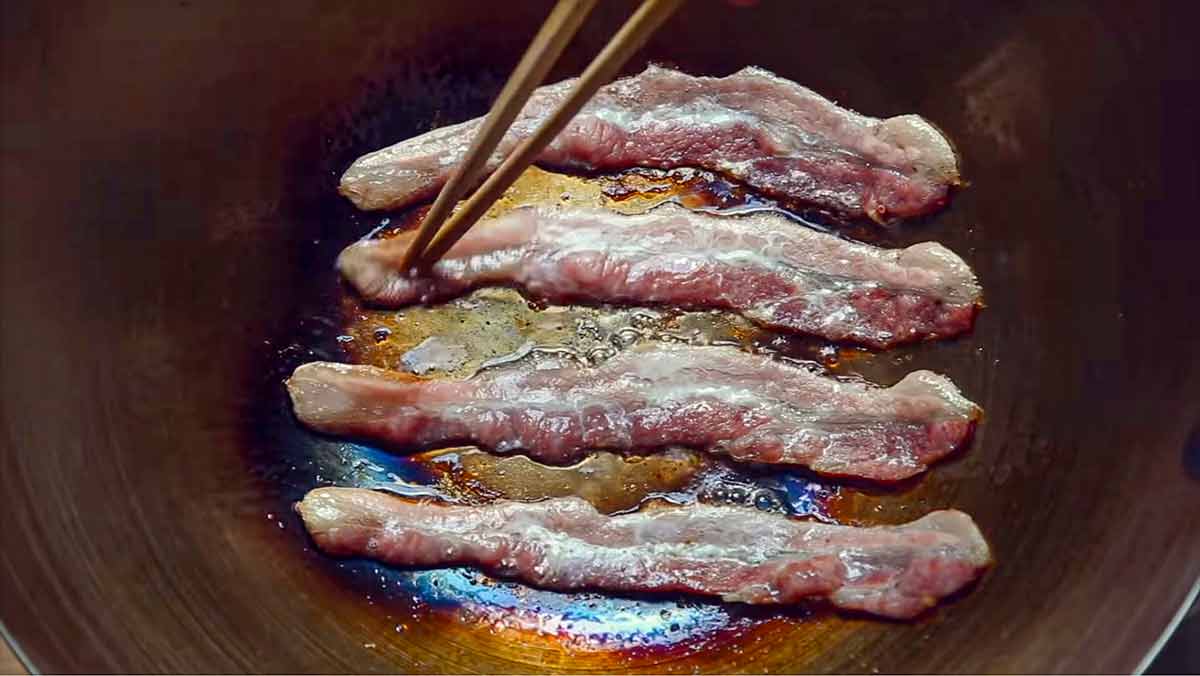
Renee: And then you get more panicked.
Grace: And then there’s this patch that looks really weird. So I just say that in the beginning, whether you use the scallion ginger method, or you use the flaxseed method, there is this awkward period that goes on for about a year, depending on how much you cook with your wok. It’s the period when your wok is an adolescent, it’s a teenager. I call it wok acne. You know, it just, it looks like there’s something wrong and people are so uncomfortable. They can’t take it. And they want to get that wok to be completely dark and uniform just like mine. And I just say, you just have to keep at it. And it’s like exercise. The first day that you do your exercises your muscles are not going to look any different. It takes months before you see that little bit of muscle, right?
Renee: So once you finally convince people to have a little patience, what’s probably the biggest question people have about the actual use of the wok while they’re trying to cook?
What do I do about the rust on my wok?
Grace: There are two questions that come up all the time and that is, they get very nervous about rust. They don’t want a pan that rusts. No, no, no, no, no. That’s not for me. And so when they wash the wok and dry it, and I always tell them to dry it on the stove, somebody inevitably will take a paper towel and just wipe it. And then sometimes there’s a little faint film of brownness, there’s a little discoloring on the paper towel. And that makes people absolutely nuts. Oh no, it’s rusted.
Renee: I ruined it.
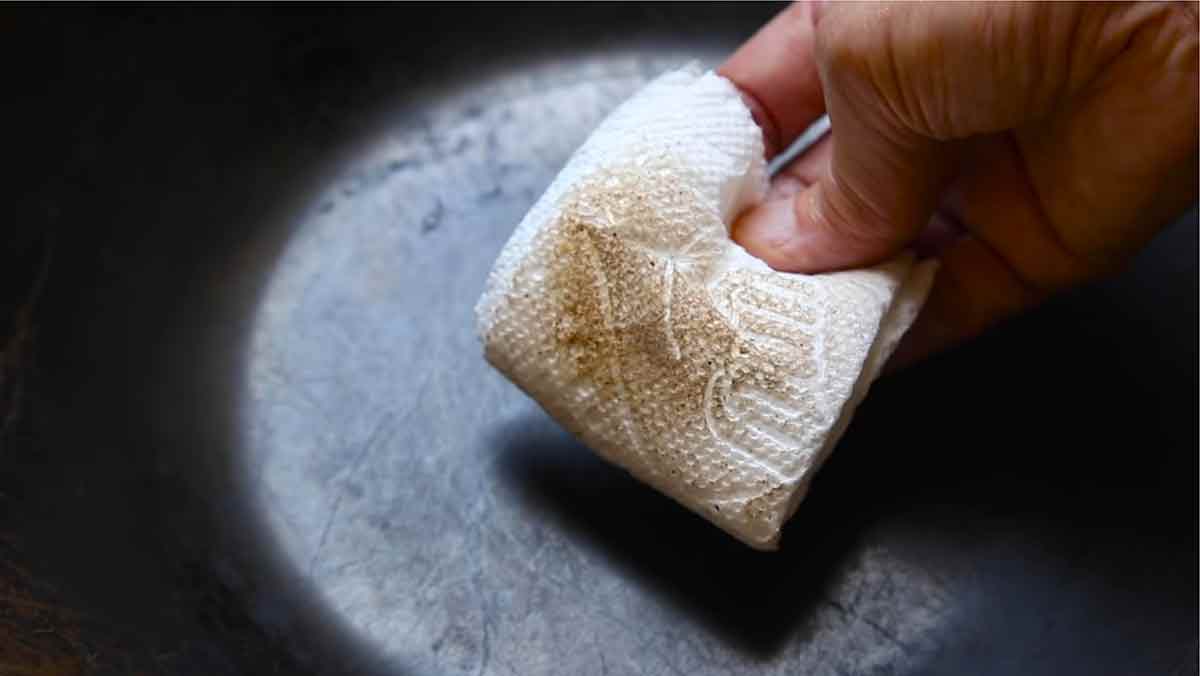
Grace: I’ve ruined it or it’s ruining me. It’s hurting me. The beauty of it is, carbon steel and cast iron are iron pans. And the more you cook with these pans, you are actually absorbing–when the pan heats up–you are getting iron in your food. And it’s a beautiful thing. And I say to people, when you cook on a grill, if you were to wipe the grill at the end, for sure there would be a little discoloration on your paper towel, and that doesn’t seem to bother you. So why are you picking on your little wok? Let your wok have a break. And the other thing, Renee, is people get very nervous about scratch marks. Like I stir fried and the meal was delicious, but I see some marks on my wok and what should I do? But the more you cook with your wok, those scratch marks just fill in.
Renee: And then you get new scratch marks and then you rinse and repeat.
Grace: But one big tip is, which is very shocking, the Chinese spatulas that you can buy in Chinatown right now for a wok will scratch your wok. And I don’t know what it is, but they’re not making Chinese spatulas the way they used to. I have some old spatulas and they’re beautiful and they’re wonderful to work with inside a wok and they fit the curve of the wok. And so I actually say the best spatula to use, rather than a Chinese spatula, which will really scratch your wok, is, I think those flexible fish spatulas that give a little, there’s a little bend or like an old fashioned pancake spatula.
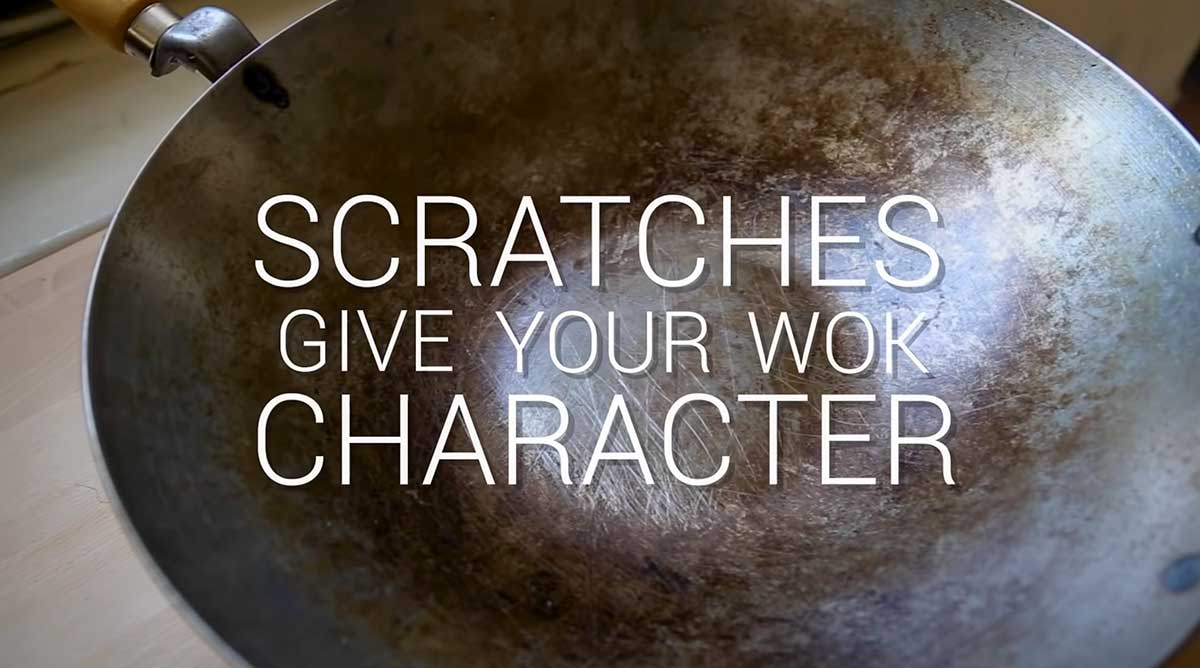
David: The old like silicone.
Grace: No, no, I don’t want any chemicals. I want metal. I want metal because metal is thin enough to get under the food. Lots of people want to stir fry with wood. Wood is too thick and I don’t want any unnatural chemical touching my food. So I’m not a fan of plastic or silicone
David: Okay. Let me ask you this. You mentioned carbon steel and Renee mentioned stainless steel. You sort of squawked at stainless steel. Can you tell us the difference between them and why you prefer carbon steel?
Grace: Sure. So I have a Type-A personality, and I have tested every conceivable material that woks are made with. And stainless steel, your food will stick. The beauty of carbon steel is the more you cook with it it actually acquires what I call a “natural nonstick surface”. I call it ancient Chinese nonstick cookware. So each time you’re cooking with it, a little bit of oil is burning into the surface. And with time, you need less and less oil. And it’s the same thing with a cast-iron skillet. You actually get this beautiful nonstick surface so you need very little fat to cook something.
What is wok hei?
Renee: And Grace, is it that surface that then contributes to the wok hei. That’s so abundant, that kind of indescribable, almost charred, smoky taste that’s imparted to food made in a wok?
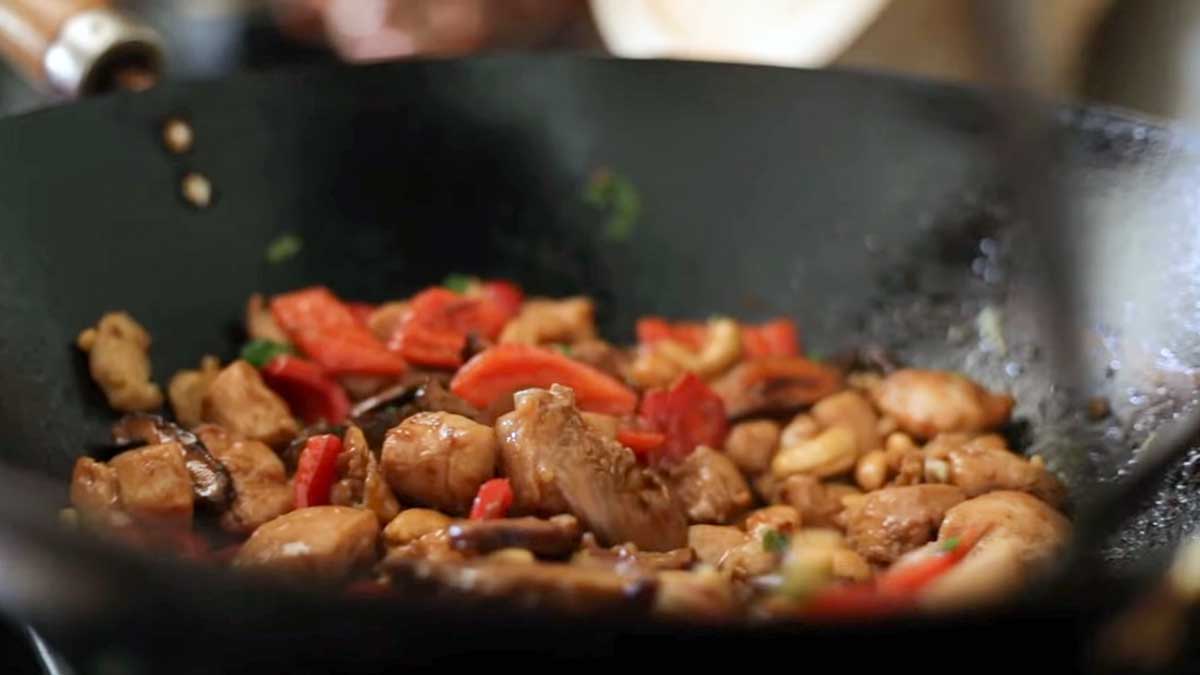
Grace: Wok hei is a Cantonese term hei is the same as chi in Mandarin. So it means “life force”. So the Cantonese say that when you cook a stir fry correctly, it possesses wok hei. What is wok hei? I say, it’s like food right off the grill, a steak or chicken right off the grill. That first minute or two minutes, there’s an intensity of flavor. There’s an aroma and a smokiness. And five minutes later, the food is still delicious, but it’s lost that life force. And that’s what wok hei is and what creates wok hei, it is cooking in the correct pan. As I said to you, the Chinese say, the more you cook with the wok, the wok actually creates better tasting food. And the most old-fashioned wok to use is cast-iron, but not a Lodge cast-iron wok. The Chinese make a wok that is thinner than American cast-iron. It heats faster.
Grace: And if you hit it strongly against the counter, it would shatter. So it’s much thinner than Lodge. And so the Chinese actually say the old fashioned cast-iron wok creates the best wok hei. Hey, so first of all, it’s the pan. It’s the amount of heat. You have to have a really hot pan. You can’t stir fry with medium or medium-high heat. It needs to be high. Some people take this too far. They want to emulate the heat that you’re getting in a restaurant. And so they’re firing up their stoves, and it’s actually dangerous. You don’t need to cook with so much heat. But the third most important thing that people forget is your food has to be really fresh. You have to cook with seasonal vegetables. If you’re stir-frying asparagus in the dead of winter, there is nothing there to work with. But if you’re stir-frying asparagus in the spring, when it’s just come, it’s just been harvested, it’s sweet, the texture is silky. The quick cooking time and the high heat cooking actually just punches up the flavors, and that’s the genius of stir frying.
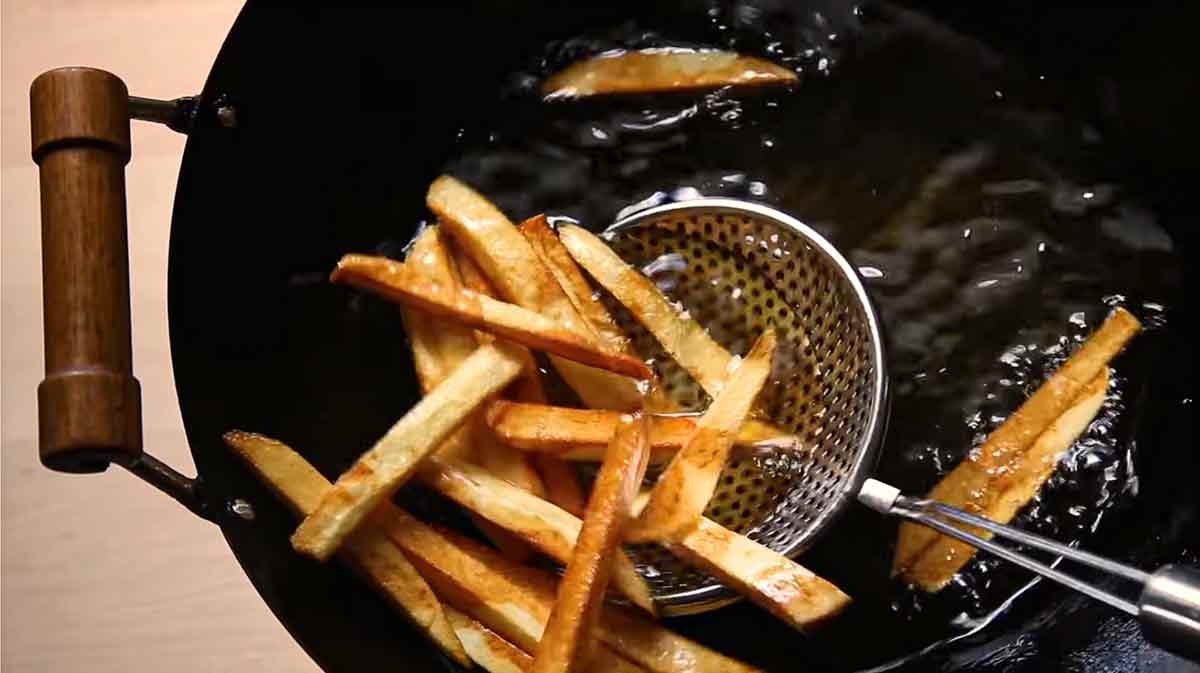
David: Yeah, that’s wonderful. So can you help our listeners, and me, too, because I will admit I’m wok-less. I’ve never owned a wok, Grace. Well, I do have something called a wok with a wok on top, which is a cataplana. It’s a Portuguese–
Renee: That’s so not the same.
David: They say the Portuguese brought it to China. Just putting it out there, children, they say that the Portuguese brought the wok to China. And what it is, imagine a wok that’s hinged with another wok on top and it opens like a clam shell.
Grace: I’ve sort of seen this.
Renee: Everyone, I wish you could see the look on Grace’s face right now!
David: Anyway. So I do have that. And it’s stainless steel, because it’s a new one. I do use that. So for those of us who are wok-less or looking for a new wok–I know Grace, I’m so sorry.
Renee: Maybe we should edit this portion out.
David: What brand would you recommend? Or what manufacturer would you recommend?
Grace: So there’s no brand. My favorite store in America for woks is The Wok Shop, which has been in business for over 50 years. The owner is 82 years old, Tane Chan. Throughout the pandemic she’s gone in every single day, but reduced her hours. And they sell a wok that is manufactured in the Bay Area. And I’ve gone to that factory and they produce all sorts of woks that are made of high quality carbon steel, heavy gauge. And they’re the best. They’re just incredible. And they’re very reasonable. It’s one-third of what a Calphalon or All-Clad pen would be. And she says that there are young Chinese-American couples that come in and they say they want to buy a wok. And she shows them the wok and they see how inexpensive it is. And they say, no, no, no. We want to buy a good wok.
Grace: And she says, well, this is a good wok. And they finally just say to her, we’re going to go to Macy’s because we’re willing to spend money. We want to spend over a hundred dollars. But you don’t need to spend over a hundred dollars because this is all you need. And so my favorite wok is a 14-inch flat bottom carbon steel wok with the long wood handle and short helper handle. The traditional wok is always round bottom, but in order to use a round bottom wok, you have to have a wok ring. And the moment you set it on the wok ring to stabilize it, it set too far from the heat and it won’t heat up sufficiently. So the flat bottom is best. It works beautifully on a normal residential gas stove. Worked perfectly on an electric coil stove. For induction or ceramic glass top it works, I would say 60% of the time or 70% of the time.
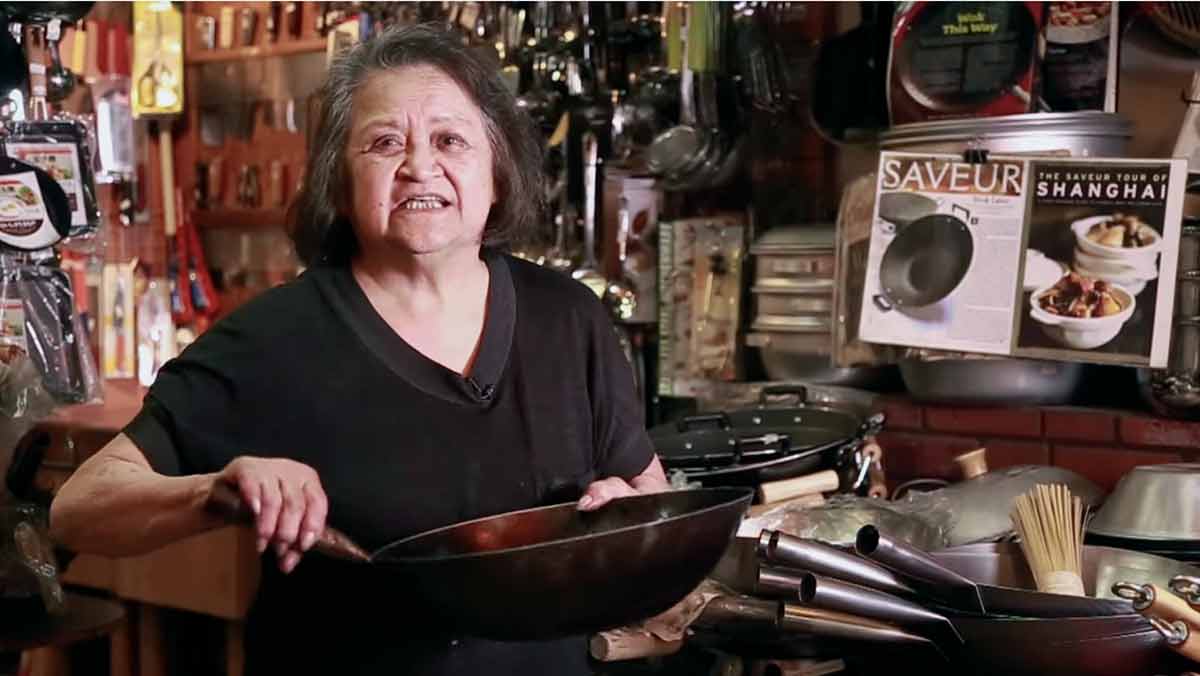
Grace: But some cooks say that when you use a wok, the heat ever so slightly warps the bottom of the wok. And so for ceramic and induction, you want that metal to be perfectly flat so that the contact is always there. So in those cases, Tane Chan, the owner of The Wok Shop recommends buying a Chinese made cast-iron wok that’s flat bottom, and that’s enamel-lined on the outside. So it doesn’t scratch the surface of your stove. But if you have a semi-professional stove like a Viking, Wolf, BlueStar, then you could use a round bottom wok. So if you have more than 15,000 BTUs on a burner, you could easily use a round bottom wok.
Renee: Terrifically helpful.
David: That’s excellent information. Thank you.
Grace: Thank you so much.
David: Grace Young is one of the food world’s greatest treasures. She’s been writing about Chinese food for 21 years. Her award-winning books include the Breath of a Wok and Stir-Frying to the Sky’s Edge. You can find out more about Grace at graceyoung.com and on Instagram @stirfryguru.
David: This podcast is produced by Overit Studios, and our producer is the well-seasoned Adam Clairmont. You can reach Adam and Overit Studios at OveritStudios.com. And remember to subscribe to Talking With My Mouth Full wherever you download your favorite podcasts. If you’d like to leave Renee and me a recorded question, or even a compliment—we love compliments!—visit our podcast page at leit.es/chat. Press and talk away and maybe you’ll be featured on the show. Chow!
Renee: Chow!
Bloopers
David: Shocking what she said. I’m going to drink something. I don’t know what to do. I’m just, I’m embarrassed.


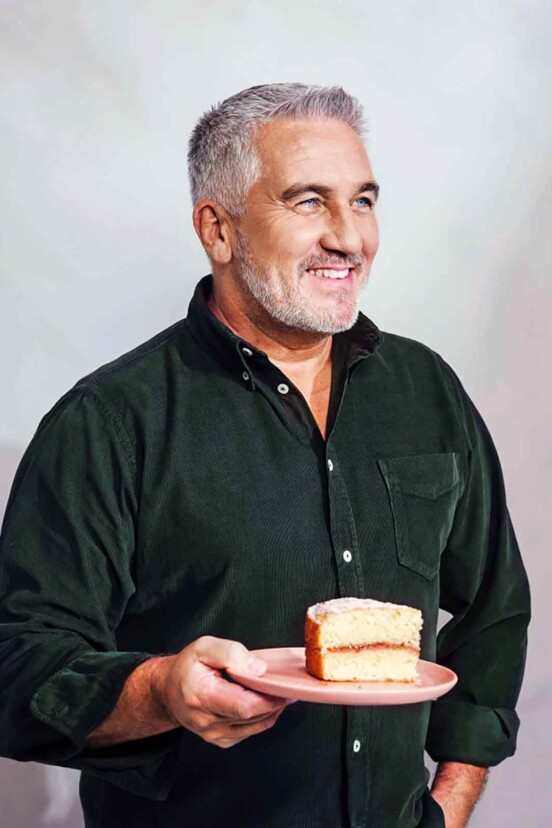










This was a great episode. I link to on a forum discussion of Woks, giving you guys the credit of course.
Wish there were more episodes. I enjoy the banter.
Thanks, bkhuna! We appreciate the credit.